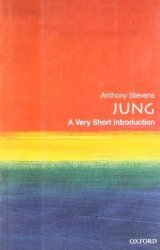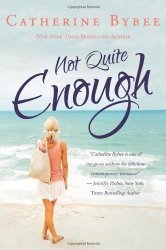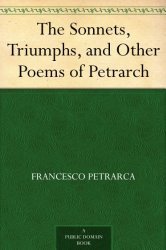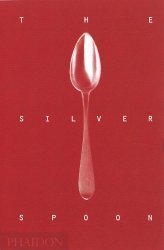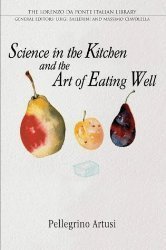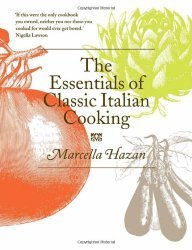Hannah Fielding's Blog, page 99
July 16, 2014
Italian iced coffee – shaken, not stirred
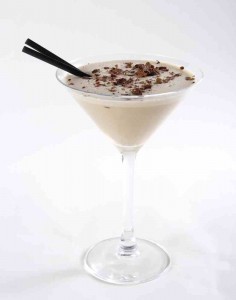 Summer’s here! Wherever you are in the world, I hope you’re enjoying the sunshine. I’m certainly taking every opportunity to write outside in my garden, amid all the tantalisingscents and vibrant colours and the sound of the breeze rustling the leaves and the distant waves crashing on the rocks. It’s wonderfully hot in the south of France – just how I like it; after all, I grew up in Egypt which is hardly cool in its warm months! But I know well that to manage the heat one needs a cool drink always to hand. And today I’m sharing with you my favourite drink to cool, refresh and revive: ideal for writing.
Summer’s here! Wherever you are in the world, I hope you’re enjoying the sunshine. I’m certainly taking every opportunity to write outside in my garden, amid all the tantalisingscents and vibrant colours and the sound of the breeze rustling the leaves and the distant waves crashing on the rocks. It’s wonderfully hot in the south of France – just how I like it; after all, I grew up in Egypt which is hardly cool in its warm months! But I know well that to manage the heat one needs a cool drink always to hand. And today I’m sharing with you my favourite drink to cool, refresh and revive: ideal for writing.
Iced coffee. Once, pairing those two words together might have earned you a confused eyebrow raise. Coffee cold? One of the earliest attempts at this was made by the French in the 19th century with a drink called mazagran: coffee, lemon and ice. Fast-forward to the 1990s and Starbucks and Pepsi attempted to revive mazagran in the form of a bottled soda-coffee. Disaster. But it was the first step in the ever-expanding proliferation of coffee houses in many countries now, which have seen coffee served cool become a well-known and well-loved treat.
But forget lumpy, creamy milkshakes served in enormous plastic beakers with wide straws. The Italians make iced coffee a drink of sophistication.In my novel The Echoes of Love, I couldn’t resist converting the English heroine, Venetia, to the ‘caffèshakerato’ cause:
She found an outdoor cafeteria with a cheerfully striped awning, and sat under a red umbrella sipping a caffèshakerato that had been poured into a wide-mouth, martini-type glass. It was Fabrizio who had introduced her to this frothy and creamy fresh-brewed espresso drink, shaken with ice and sugar. Venetia found that there was nothing more refreshing on a hot summer’s Italian afternoon.
It’s not just about the taste – simple, smooth with just the right topping of froth. It’s about the experience, which is greatly influenced by the drinking vessel of choice. Champagne is more enjoyable when sipped from a flute; wine from a wine glass; tea from a fine china tea cup; a latte from a tall latte glass – and the martini glass really makes the caffèshakerato special.
So, having dug out your martini glasses from the glassware cupboard and dusted off your cocktail shaker, you need just a few ingredients and you’re on the way to Italian iced coffee. Here’s my favourite twist on the shakerato, with that most essential of added ingredients: chocolate!
Ingredients
Half a cup of ice, crushed or in fairly small chunks
Shot of espresso – the finer the better – allowed to cool to room temperature
Vanilla syrup
Chocolate syrup
Chocolate sprinkles (cocoa powder works fine)
1. Drizzle the chocolate syrup around the inside of the chilled glass – I like to make a spiral shape.
2. Add the ice to the shaker.
2. Pour in the espresso and a generous slug of vanilla syrup.
3. Shake vigorously for half a minute and then strain into the glass.
4. Sprinkle with chocolate.
Enjoy!
Variations: Try garnishing with strawberry or orange; different syrups (Monin do a great range and the caramel one works beautifully with espresso); a dollop of your favourite ice-cream dropped on top (chocolate, anyone…?). You can use sugar rather than syrup, if you prefer; but you need to add this to the espresso when hot or it won’t dissolve properly.
July 14, 2014
Heroes and heroines: Tortured, complicated souls
 Ask me my most favourite books, and a classic English romance will always appear near the top of the list: Wuthering Heights. The agony and passion at the centre of the love story between Heathcliff and Cathy has always gripped me, moved me – and it inspired me as I wrote my novels Burning Embers and The Echoes of Love. For each of the main characters in these novels is in his or her own way tortured by a past love, as are Heathcliff and Cathy.
Ask me my most favourite books, and a classic English romance will always appear near the top of the list: Wuthering Heights. The agony and passion at the centre of the love story between Heathcliff and Cathy has always gripped me, moved me – and it inspired me as I wrote my novels Burning Embers and The Echoes of Love. For each of the main characters in these novels is in his or her own way tortured by a past love, as are Heathcliff and Cathy.
Burning Embers, Coral
Coral is fairly naïve and inexperienced in love, and the one relationship she has had left her hurt and defensive:
On a holiday weekend, she had flown to New York, unannounced, to surprise her fiancé. The nasty surprise had been all hers, since Dale showed little concern when she arrived at his office and caught him red-handed kissing his secretary. The typical cliché…
Betrayal, a terrible burden to carry. How hard it is to trust again, especially when Coral meets a man who makes her heart sing – but is a notorious womaniser with an impossibly beautiful and seductive mistress.
Burning Embers, Rafe
The womaniser. And why is he that way? Because he is a widower, stalked by thememory of a wife long-passed. A wife who drowned. A wife many would have Coral believe he allowed to drown. What is the truth of his past? Why exactly is he tortured by his wife, Faye? These are questions Coral must answer if she is ever to tame and quiet this wounded soul.
The Echoes of Love,Venetia
Were you in attendance at the grand masquerade Venetian ball at the opening of The Echoes of Love, and you were introduced to Venetia Aston-Montagu, the impression you’d form would be of a capable, confident, independent woman. But you’d never guess that beneath the cool exterior lay a bruised heart. And the cause of the wounds? Judd Carter, the man who had abandoned her when she needed him most:
One day, while Judd was away on manoeuvres in Ireland, Venetia had discovered she was pregnant. … Venetia had written to Judd with the news, but he had never replied. The string of letters she had sent after that, imploring him to get in touch, had all remained unanswered. If he’d been killed in action, she would have found out very quickly, so even having that morbid reason for his silence was denied her. She was devastated.
Worse, soon after the abandonment Venetia fell and miscarried: a double loss, and a heartbreaking one. By the time Venetia meets Paolo in the book, she’s understandably reticent about letting her heart love, trust. What if he hurts her, lets her down… leaves her?
The Echoes of Love, Paolo
Paolo, like Rafe, is a widower. But there the similarity ends – for while Rafe is tortured by his memories of the death of his wife, Paolo is entirely unable to remember his. As Venetia learns in the book:
Paolo is amnesic. He lost his memory in a car accident ten years ago, while on his honeymoon. He and his wife were returning from a nightclub; his wife was driving, and she died on the spot. He was badly hurt and was in a coma for several months. When he woke up, he had forgotten his past: a total loss of memory.
Does this lack of memory mean Paolo is not hurt by his past, of which he has no knowledge?
Set on the wall behind the desk, the huge portrait was of a beautiful young blond woman with deep set, laughing blue eyes that looked down at her mischievously. The artist had captured the obvious joie de vivre that shone through her smile. Paolo’s dead wife, Venetia thought, and her heart ached for him as she wondered how one would get to grips with the tragedy of losing not just a loved one, but also one’s own identity.
‘My wife,’ Paolo announced to her in a matter a fact way that took Venetia a little aback. ‘She died in the accident which robbed me of my past. I don’t remember her – for me it’s as if she never existed.’
He took out a couple of glasses from a drawer in his desk and poured Venetia a glass of white wine from a bottle that stood in a bucket of ice on a small table next to it. ‘I don’t grieve for her as much as I grieve for my lost life. We were on our honeymoon. She was driving, so I don’t even have the privilege of feeling guilty. I might as well be dead.’ His voice hardened as he spoke.
Paolo does his best to be anything but Heathcliff – but his actions with Venetia reveal he’s notunemotive. Will the past always stand between Venetia and Paolo, the ghost of Paolo’s wife, the forgotten marriage?
Venetia admits that she needs ‘tortured, complicated souls to spark an interest in her’. For me, that’s fundamental in a romantic lead. Only tortured, complicated souls create stories grounded in realism, in conflict, in passion. Characters need to find the dark places in their souls; to find the courage to trust despite knowing too well the risks of doing so. Then, ultimately, that powerful connection that unites Heathcliff and Cathy through life and death exists: ‘Whatever our souls are made of, his and mine are the same.’
July 12, 2014
An argument for digitising books – all books
I’ve always loved this song:
The tune is haunting, and the main lyric ‘Where have all the cowboys gone?’ strikes a chord about how society – gender roles, notions of romance – has changed. Cowboys aren’t quite my ideal heroes, so I’d perhaps be singing ‘Where have all the gentlemen gone?’ but the sentiment is the same.
And I wonder: someday, will people be singing, ‘Where have all the old books gone?’
In a moment in time, a book is published and read. But then that moment passes, and the publisher may let the book go out of print. The book is unpublished. Any loyal or new reader must resort to scouring second-hand bookshops to find a copy. And more moments pass, and more, and too many books that once mattered to someone, many people even, become forgotten.
Take, for example, The Complete Neurotic’s Notebook by Mignon McLaughlin. Mignon was an American magazine editor who collated her aphorisms into the two-volume Complete Neurotic’s Notebook. You can find plenty of her insightful aphorisms quoted online these days; for example:
Don’t be yourself – be someone a little nicer.
It does not undo harm to acknowledge that we have done it; but it undoes us not to acknowledge it.
Everybody can write; writers can’t do anything else.
The only courage that matters is the kind that gets you from one moment to the next.
If the second marriage really succeeds, the first one didn’t really fail.
What you have become is the price you paid to get what you used to want.
Every society honors its live conformists and its dead troublemakers.
Great material, don’t you agree? And yet, if you pop onto Amazon and try to pick up a copy you’ll find yourself scanning second-hand sellers looking for anything upwards of $50 for a book dating back to 1981: the book is out of print.
Some readers find this a travesty. The brilliant website http://neglectedbooks.com/ exists to jog memories of books that are slipping into the ether. As the site states: ‘Here you’ll find lists of thousands of books that have been neglected, overlooked, forgotten, or stranded by changing tides in critical or popular taste.’
Is it acceptable for works to simply disappear over time – works that writers toiled over, that readers once appreciated, enjoyed? Or do we have a responsibility to preserve these books – for our generations and for all those to come? I think we do. I think we need to be investing in digitising every book in every archive we can find, so that when the pages have turned to dust, the words live on.
Ensuring that a writer’s works that were published remain published is not just about that person living on through his or her own work (though it’s worth noting that was likely part of the author’s objective in writing); it’s about giving future readers the choice in what they’d like to read. Last week, I wrote about The Great Gatsby, and the fact that it very nearly faded into obscurity when it sold poorly during F. Scott Fitzgerald’s lifetime. In fact, it was in the year after the author’s death – 16 years after its first publication – that a republication of the book parceled up with Fitzgerald’s posthumously published novel The Last Tycoon saw it receive positive reviews. Imagine the book had never been republished. Imagine American literature today if The Great Gatsby had died with its creator.
The ebook. Not necessarily the entity that will kill the book as we know it. In fact, it could become the savior of book – all books.
July 10, 2014
Favourite film: Gatsby
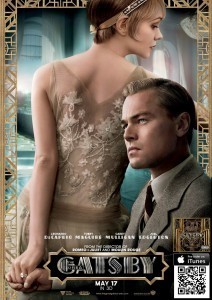 Did you know that when author F. Scott Fitzgerald died in 1940 he believed himself a failure? That long years of alcoholism saw a heart attack claim his life at just 44? That since the publication of his book The Great Gatsby, which had received poor reviews and lack-lustre sales, he had thought his work unimportant, forgotten?
Did you know that when author F. Scott Fitzgerald died in 1940 he believed himself a failure? That long years of alcoholism saw a heart attack claim his life at just 44? That since the publication of his book The Great Gatsby, which had received poor reviews and lack-lustre sales, he had thought his work unimportant, forgotten?
Fast-forward to 2014 and The Great Gatsbyis commonly heralded as one of the greatest works in American literature. It’s been adapted for the stage. It’s been adapted for the big screen. And the last adaption: what a show! It reminded me of a review of my debut novel, Burning Embers: ‘an epic like Hollywood used to make’ – only it’s both nostalgic and starkly current all at once.
I love BazLuhrmann’s work – most films pale against his in terms of depth and artistry. His films, for me, are sublimely romantic: Moulin Rouge and Romeo and Juliet especially. And now Gatsby.
I could write endlessly about what I love in this sensitive, thoughtful, inventive adaption of F. Scott Fitzgerald’s novel, but instead I will focus in on the two aspects of the film I most admired:
The depiction of the Jazz Age:The attitudes, the manners, the speech, the costumes, the music – oh the music! Fabulous. I was swept away into that era caught between the wars.
The incorporation of the book itself:I loved, loved this! How wonderful to show so much respect to the author of the book on which the film is based as to incorporate the very words he wrote. The narrator’s voice is so powerful, bringing to us the words from the page – and I was mesmerised by the inclusion of text and its typography. The book is there, throughout the film: not forgotten, not a shadow. The book is all.
Overall, I think the film stands as a beautiful, respectful, celebratory testament to F. Scott Fitzgerald’s once-forgotten work. It honours this writer, and in doing so makes right a wrong. As I watched the film, I found myself wondering what F. Scott Fitzgerald would think, could he see his story brought to life in this way. Perhaps he’d raise a glass to toast it. Or perhaps he wouldn’t have needed that glass after all.
July 8, 2014
A Jungian perspective
No doubt you’ve heard of Carl Jung (1875–1961), the Swiss psychiatrist and psychotherapist who was the father of analytical psychology. Yung wrote prolifically, and his writings have been hugely influential in many different areas, from philosophy to archeology, psychiatry to literature.
In my novel The Echoes of Love, Paolo quote Jung to Venetia as follows:
‘Most of the time, people only see what they want to see. I’ve learnt that the power of visualising is very important in life, that is, if you want to survive. Carl Jung said that, “it all depends on how we look at things, and not how they are themselves”. I think he has a point.’
I find Jung’s work insightful and powerful. In fact, had I the room, I could have woven in much more Jungian wisdom which at times Paolo and Venetia sorely lack:
The meeting of two personalities is like the contact of two chemical substances: if there is any reaction, both are transformed. So it is for Paolo and Venetia –their very first meeting transforms each irrevocably.
Everything that irritates us about others can lead us to an understanding of ourselves. Oh how fiery Venetia can be! But whatever Paolo does that pushes her button is really not about him: her emotional reaction is about herself.
Your visions will become clear only when you can look into your own heart. Who looks outside, dreams; who looks inside, awakes. Can Venetia find the wisdom and the courage to put herself under scrutiny?
Knowing your own darkness is the best method for dealing with the darknesses of other people. There is something dark in Paolo – a man haunted by a past he has forgotten. But how can Venetia understand him unless she’s prepared to come to terms with pain from her own past: the loss of a lover, the loss of a baby.
Until you make the unconscious conscious, it will direct your life and you will call it fate. A telling point for Paolo, who is suffering from amnesia and is drawn to Venetia by what he thinks of as fate.
There’s no coming to consciousness without pain.What love story is without pain? Both characters have to be willing to feel it, hard as it is. But as Yung also tells us: Even a happy life cannot be without a measure of darkness, and the word ‘happy’ would lose its meaning if it were not balanced by sadness. The pain they go through can only make the heights of their love higher still.
Where wisdom reigns, there is no conflict between thinking and feeling. For so much of the book, Venetia is locked into a battle with heart, which aches for Paolo, and mind, which finds flaw with him. Can she reach that point where the two are in harmony?
I am not what happened to me, I am what I choose to become. My absolute favourite, and really the crux of the book. Don’t be a victim of circumstance, of acts perpetuated by others. Take charge. Grasp hold of love: it’s yours for the taking!
What do you think? Does the Jungian perspective strike a chord with you, open a door to a new way of understanding, being? I would love to hear your thoughts.
If you’re new to Jung, I recommend the following book, published by Oxford University Press, as a starting point.
July 7, 2014
Ferrari: A car for a male romantic lead
 The following extract is from my novel The Echoes of Love:
The following extract is from my novel The Echoes of Love:
It was two o’clock in the morning. The Ferrari sped through the night towards San Stefano in Tuscany. Attuned to the darkness surrounding him, his sombre mood overwhelming, Paolo drove the sleek, powerful sports car as though he was entering the 24 Hours of Le Mans race. Driving always relieved his stress. But tonight it wasn’t stress that was invading his body and his mind; it was the shadowy memory of a woman – Venetia. Vulnerable, bewitching Venetia, who haunted every hour of his days and nights.
Paolo is British-born, but has made his home – and a significant fortune – in Italy. I couldn’t resist giving him the ultimate ‘boy toy’ for the setting and his wealth: a Ferrari.
Did you know?
The Ferrari company, formed in 1929, was initially only involved in motor racing. The first road-legal car wasn’t manufactured until 1947.
Founder Enzo Ferarri was a racing driver and entrepreneur, and he remained a key part of the Ferrari business until his death at the age of 90. The Enzo Ferrari was created in dedication to his memory.
The Ferrari logo is a black stallion rearing up against a yellow background. This originates from a race Ferrari won back in 1923, when Countess Paolina suggested to him that painting such a horse on his car would bring him luck (it had worked for her son, Count Francesco Baracca, who had become a war hero for his valour in the air force).
Ferraris are most usually red, a tradition that dates back to the 1920s when Italian cars racing in grand prix were assigned that colour. Today, red is still popular but you can choose other colours. (Paolo’s is blue.)
The F50 was made to celebrate Ferrari’s half-centenary. The company made only 349, pricing each at $557,000.
In September 2012, 964 Ferraris took to the track at Silverstone, England. More than $162 million worth of vehicle in one place!
For me, the Ferrari represents wealth, glamour, speed and joie de vivre, which makes, for Venetia, a thrilling juxtaposition to the beautiful Tuscan countryside:
The Ferrari climbed and twisted alarmingly along the rugged coastline, and through perched villages, on roads fringed with pink, yellow, and red wild flowers. Cars and buses roared past, racing and swerving round hairpin corners. The sun was as brilliant as ever, the air clear and stimulating, and everything was aflutter in the sunny breeze. The shimmering hillside, planted with olives and vines, sloped steeply down; beyond the motionless spires of cypresses stretched the blue and green hills of Tuscany. The hollows and little valleys were brimming up with whitish haze and the flat elder blossoms spread unmoving in the heat of this glorious day.
On the seaward side, they overlooked a necklace of small, sun-drenched, white sand beaches, separated by coves and craggy coral rock outcroppings. Viewed from far above, the shoreline was spectacular, with the great Tyrrhenian Sea stretching out beyond, sprinkled with islets and dotted with boats on its turquoise surface. The Ferrari tore past clusters of pastel-hued cottages framed by flowering trees, nestling in the hills that rose to windswept bluffs, where every turning had a picture-postcard view of sprawling green land, coloured villas and blue waters. Golden sunshine poured down, and Venetia’s face was bright with pleasure, chestnut curls flying across her face. She loved the feel of the wind in her hair and the smell of the sea.
But what happens when such a power beauty becomes a beast?
The road curved around the hillside and began to slope down to the promontory where the town nestled. The Ferrari started to pick up speed, hurtling round the bends.
‘Paolo, rallentare. You’re going too fast!’ Venetia glanced at him, worried.
‘I’m trying.’ Paolo slammed his foot down on the brakes but the car kept flying round the twists in the road, with Paolo swinging the steering wheel wildly in an attempt to keep control of the vehicle. ‘There’s something wrong with the brakes. Hold on tight, Venetia!’
There was nothing Paolo could do but try and stay with the unruly movements of the car, turning the wheel sharply this way and that. A truck loomed towards them round another corner, sounding its warning horn as it swerved to miss them. Paolo shifted down a gear and kept pumping the brakes as the car’s engine made a rebellious rasping noise. They raced through a short tunnel and out the other side to where the road was straightening. Venetia gasped. Far ahead she saw another herder, this time with a flock of goats, crossing the road.
‘Paolo, we’re going to hit them!’
‘No we’re not.’ He gritted his teeth and pushed the car down through another gear. The engine screamed as the Ferrari careened over to the opposite side of the road. Although they had slowed down slightly because the gradient was levelling off now, Paolo hit his horn repeatedly as they sped towards the goat herder, still at an alarming speed.
Venetia could hear her own cry of terror. Oh my God, we’re going to die, she thought, her knuckles white on the dashboard, sweat pouring down her neck.
I will leave you in suspense – author’s prerogative! – and with a quote from bestselling American author Dean Koontz which makes me smile: ‘I do give books as gifts sometimes, when people would rather have one than a new Ferrari.’ I admire a supercar, but would much prefer a new book!
July 5, 2014
Book review: Not Quite Enough by Catherine Bybee
From the blurb:
Monica Mann has made it her life’s work to save lives. After an earthquake and tsunami hit the shores of Jamaica, she volunteers her trauma skills with Borderless Nurses. Calculating and methodical, Monica creates order out of whatever chaos she finds.
Until she finds the perpetually barefoot, impossibly masculine Trent Fairchild. No one can pin him down. No, really. He’s a pilot and manages a small fleet of choppers on his adopted island home. Hopelessly drawn to one another, they manage to slip away from the wreckage to get a little closer. And they get a lot closer than expected when aftershocks from the earthquake trap them in their own life-or-death scenario. Paradise has brought them together. Now will it tear them apart?
I chose this book to read for four reasons:
1. I love the cover. Dreamy and a little whimsical.
2. The author is a former ER nurse, so I knew the content would be well grounded.
3. I confess I rather enjoy a romance that touch of high drama.
4. I was most moved by the movie The Impossible, which tells the story of a family after the devastating 2004 tsunami, and the blurb at once called that film to mind.
I found the book to be quite a gripping read, and the elements of the story focused on the aftermath of the tsunami are intriguing and well written. It’s certainly a compelling backdrop in which Monica and Trent’s relationship forms, and I love the beauty of the island, which is wonderfully conveyed by the author:
Small white-capped foam sat atop bright blue water that turned turquoise green and then dark blue. The sand in the cover was pristine white with some debris left over from the small wave that hit this shore. But it wasn’t enough to take away from the beauty.
Monica and Trent are strong, three-dimensional characters that it is easy to root for – especially Trent, whom I found to be a most attractive male lead.
I like the storyline, and the confusion near the end that comes in to threaten their future together, and I love the ending of the book.
It’s a book to pick up for a quick, riveting read with lots of action and likeable characters, but don’t expect a good deal of high emotion or poignancy, or the kind of whimsical romance that I think the cover suggests. Also, this is a book for readers who like very modern, edgy, sassy romance (think swear words).
Overall, an easy pick for drama and realism, and a gritty love story with characters you can’t help but engage with.
Not Quite Enoughis available now from Amazon; click on the book cover below to visit the store.
July 2, 2014
Favourite poet: Petrarca
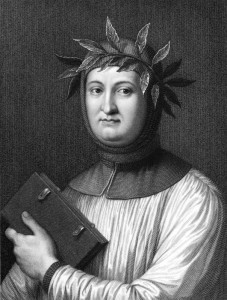 A love poem a day for the woman you adore – what can be more romantic? This was the gift of Italian writer Petrarca: 366 sonnets penned way back in the fourteenth century, later collected into the Rime in vita e morte di Madonna Laura – Petrarch’s Sonnets.
A love poem a day for the woman you adore – what can be more romantic? This was the gift of Italian writer Petrarca: 366 sonnets penned way back in the fourteenth century, later collected into the Rime in vita e morte di Madonna Laura – Petrarch’s Sonnets.
Francesco Petrarca was in a church when he first laid eyes on his muse, Laura. It was a moment that changed his life – and made literary history:
Sonnet 3
It was the day the sun’s ray had turned pale
with pity for the suffering of his Maker
when I was caught, and I put up no fight,
my lady, for your lovely eyes had bound me.
It seemed no time to be on guard against
Love’s blows; therefore, I went my way
secure and fearless-so, all my misfortunes
began in midst of universal woe.
Love found me all disarmed and found the way
was clear to reach my heart down through the eyes
which have become the halls and doors of tears.
It seems to me it did him little honour
to wound me with his arrow in my state
and to you, armed, not show his bow at all.
Petrarca channeled all of his feelings into a new poetry form: the sonnet, fourteen lines with a formal rhyme scheme. His writing laid the foundation for the modern Italian language and for the lyrical poetry that developed during the Renaissance, in particular what came to be called the Petrarchan sonnet.
What stands out most in Petrarca’s sonnets, for me, is the depth of the passion with which he writes. He loves Laura ardently – but she is out of reach. She belongs to another! (Historians believe she was Laura de Noves, the wife of Count Hugues de Sade.) Thus he pours out all of his unrequited love onto the paper as a means to cope. He later wrote: ‘I struggled constantly with an overwhelming but pure love affair – my only one’. Only Laura’s premature death released him from the grip of emotion. In a letter he confessed that her passing was ‘bitter but salutary for me’; that it‘extinguished the cooling flames’. His heart had calmed, but his sonnets remained as testament to his love. And they are so beautiful!
Today, I’m sharing with you my favouritePetrarca poem; I find it so moving, so evocative (the man who thinks and weeps and writes!), so universal in its truth. If you’d like to read Petrarca’s sonnets for yourself, they are readily available online, or collated in a free ebook available on Amazon:
Sonnet 129
Love leads me on, from thought to thought,
from mountain to mountain, since every path blazed
proves opposed to the tranquil life.
If there is a stream or a fountain on a solitary slope,
if a shadowed valley lies between two hills,
the distressed soul calms itself there:
and, as Love invites it to,
now smiles, or weeps, or fears, or feels secure:
and my face that follows the soul where she leads
is turbid and then clear,
and remains only a short time in one mode:
so that a man expert in such a life would say
at the sight of me: ‘He is on fire, and uncertain of his state.’
I find some repose in high mountains
and in savage woods: each inhabited place
is the mortal enemy of my eyes.
At every step a new thought of my lady
is born, which often turns the suffering
I bear to joy, because of her:
and, as often as I wish
to alter my bitter and sweet life,
I say: ‘Perhaps Love is saving you
for a better time:
perhaps you are dear to another, hateful to yourself.’
And with this, sighing, I continue:
‘Now can this be true? And how? And when?’
Sometimes I stop where a high pine tree or a hill
provides shade, and on the first stone
I trace in my mind her lovely face.
When I come to myself, I find my chest
wet with pity: and then I say: ‘Ah, alas,
what are you come to, and what are you parted from!’
But as long as I can keep
my wandering mind fixed on that first thought,
and gaze at her, and forget myself,
I feel Love so close to me
that my soul is satisfied with its own error:
I see her in many places and so lovely,
that I ask no more than that my error last.
Many times I have seen here vividly
(now, who will believe me?) in clear water
and on green grass, and in a beech trunk,
and in a white cloud, so made that Leda
would surely have said her daughter was eclipsed,
like a star the sun obscures with its rays:
and the wilder the place I find
and the more deserted the shore,
the more beautifully my thoughts depict her.
Then when the truth dispels
that sweet error, I still sit there chilled,
the same, a dead stone on living stone,
in the shape of a man who thinks and weeps and writes.
I feel a sole intense desire draw me
where the shadow of no other mountain falls,
towards the highest and most helpful peak:
from there I begin to measure out my suffering
with my eyes, and, weeping, to release
the sorrowful cloud that condenses in my heart,
when I think and see,
what distance parts me from her lovely face,
which is always so near to me, and so far.
Then softly I weep to myself:
‘Alas, what do you know! Perhaps somewhere
now she is sighing for your absence.’
And the soul takes breath at this thought.
Song, beyond the mountain,
there where the sky is more serene and joyful,
you will see me once more by a running stream,
where the breeze is fragrant
with fresh and perfumed laurel.
There is my heart, and she who steals it from me:
here you can only see my ghost.
July 1, 2014
Historic Italian culinary bibles
I love Italian food – eating it, but most of all cooking it. To get me in the mood while writing my Italian-set The Echoes of Love, Italian was often on the menu at home. For me, cooking Italian doesn’t just mean throwing some dried fusilli pasta in a saucepan, but endeavouring to create meals that are as close to the authentic dishes as I can manage. And to achieve that I turn to three important books that are culinary bibles.
The Silver Spoon
From the blurb:
The Silver Spoon was the first English edition of the bestselling Italian cookbook of the last fifty years, Ilcucchiaiod’argento. With over 2,000 recipes, its simple style and authenticity has made it the definitive, bestselling book on Italian cooking, for both gourmets and beginners. Following its phenomenal success, this new updated and revised edition is illustrated with newly commissioned photography and includes new menus by celebrated Italian chefs.
The book was first published back in 1950, and the fact that it is still selling strongly today says everything: this is regarded as the culinary bible by Italians. As the Wall Street Journal put it, ‘It’s not so much one more Italian cookbook as the one-volume encyclopedia of Italian home cookery.’ I find the book wonderful, a real treasure trove of information – but I do think it’s for the more accomplished cook; there is no hand-holding here, and at times methods and ingredient quantities are a little vague.
Science in the Kitchen and the Art of Eating Well
From the blurb:
First published in 1891, PelegrinoArtusi’s La scienza in cucina e el’arte di mangiar bene has come to be recognized as the most significant Italian cookbook of modern times. Not merely a popular cookbook, it is a landmark work in Italian culture.
I love this book because it is written with such passion with an edge, sometimes, of humour. He begins the book:
Cooking is a troublesome sprite. Often it may drive you to despair. Yet it is also very rewarding, for when you do succeed, or overcome a difficulty in doing so, you feel the satisfaction of great triumph.
This is a wonderful collection of around 800 regional recipes of yesteryear that sits beautifully on the modern dining table. Interestingly, the author self-published the book because he could not find a publisher willing to take the risk on it: one of history’s earliest independent publishing success stories!
The Essentials of Classic Italian Cooking
From the blurb:
Marcella Hazan is widely regarded as one of the greatest Italian cookery writers in the world and The Essentials of Classic Italian Cooking is her masterpiece, now reissued with a gorgeous new cover design. Aimed at cooks of every level, be they beginners of accomplished chefs, it is an accessible and comprehensive guide to authentic Italian cuisine and should find a place in the kitchen library of anyone who is passionate about good food.
So well-respected was Marcella Hazan for her food writing that she was given a knighthood by Italy’s president! She lived in New York, but kept a second home in Venice.
I rather like the authoritarian tone in the book. Marcella tells me what to do with firmness and confidence, I obediently follow orders, and the results are invariably delicious!
1&keywords=classic+italian+cookbook
June 29, 2014
How do your cure writer’s block?
 This was the question posed by Mslexia writing magazine in its most recent reader survey.
This was the question posed by Mslexia writing magazine in its most recent reader survey.
Author Terry Pratchett famously wrote: ‘There’s no such thing as writer’s block. That was invented by people in California who couldn’t write.’ But of the 1,904 women writers who took part in the survey, four out of five admitted writer’s block was a very real problem to them, ranging from occasional to ‘a constant battle’.
The Mslexiaarticle offers a variety of methods for combatting writer’s block, ranked by popularity for respondents:
Positive feedback from someone I trust
Reading great writing
Unavoidable writing deadline
Attending a writing group
A change of scenery
Solitude
Contact with a writing buddy
Daily writing practice
Regular physical exercise
A regular time to write
The most common reason
I was one of the participants in this survey, and I admit that I fall into the category of those who rarely struggle with writer’s block (one in five). I don’t think, though, that is because I’m especially lucky or brilliant at writing fluently. I think, over the years, I’ve simply devised my own personal cure for writer’s block that I use at the first sign of trouble.
My own strategy list is as follows:
Let go of fear. Forty per cent of respondents to the Mslexia survey cited lack of confidence in writing ability as a factor in their blocks. You can’t write if you think you can’t write. You can’t write if you’re worrying about what people will think when they read it: your readers, your publisher. To write well, you have to go into a vulnerable place inside; you can’t do so if in that vulnerable place you’re open to being hurt. If you can find a way to appreciate your writing, instead of fearing it, you’ve cured 99 per cent of writer’s block right there.
Only write what you love. If you’re not really enjoying your writing, you won’t want to write. If you’re stuck with a poem or a short story or a chapter, is it the writing itself that needs to change – the angle, the narrative, the style?
Be your own Sister Francis. I was educated at a French convent school, and the nuns who taught me were far from lax. Writing requires a good deal of motivation, commitment and hard work. Just as Sister Francis would stand over me at school, telling me sternly to get on with my sums or my composition, my inner writing coach – teacher – director commands me to just get on with it. Sometimes, as I did in my youth, I bristle against the firm hand; but deep down I know that I need it.
Make a routine, and stick to it. Guard your writing time jealously and create habits that signal to you that it’s time to write: door closed, desk tidy, coffee brewed, deep breath… off you go.
Just write.If the words won’t come, give up trying to find those specific words and write other ones. When I do this, I invariably find that the deviation I’ve taken leads me to somewhere unexpected, and exciting. Dare to deviate!
What do you think? Is writer’s block a problem for you? What strategies do you use to get past it? Please do share if you have a moment.


